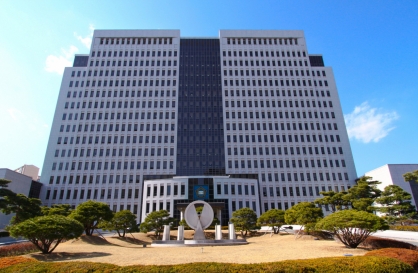It’s a boom time in the Canadian province of Alberta, where technological advances and sky-high commodity prices have turned the region’s oil sands into a sticky, tarry gold mine.
Here’s a safe prediction: The United States will share in this bounty, one way or another. Canada will ship oil to its largest trading partner via rail, barge or truck, if need be. And the U.S., thirsty for energy, will soak up every drop from its reliable neighbor to the north.
That common interest leads to an obvious conclusion. The Obama administration should grant its approval without further delay for a proposed pipeline stretching 1,711 miles across the Plains from Canada’s deposits to the U.S. refineries and terminals along the Gulf of Mexico. A pipeline is the safest and most efficient method for moving crude by the millions of barrels.
Yes, the scale of the project is enormous. It could make Canada the world’s second-largest producer of oil after Saudi Arabia. Americans should be celebrating a development that will reduce the dependence on oil from less-congenial foreign sources. It will pump up job creation with private-sector investment and help keep prices in check when the economy starts growing in earnest again.
Yet the proposed Keystone XL pipeline has run into heated opposition. Some environmentalists are determined to stop it. Protests staged at the White House earlier this month only hint at the passion it evokes ― from actor Robert Redford to the Dalai Lama.
Opponents object for two main reasons: First, they want to discourage the mining of oil sands. No question, tearing up boreal forests and ancient peat bogs to get at the petroleum within can’t help but degrade the land. The resulting semi-solid form of oil is dirtier than the smooth-flowing crude just below the Arabian desert. As with any fossil fuel, burning it pumps carbon and other pollutants into the atmosphere, and emissions from processing this particular form of fuel pose a problem as well. On the plus side, the technology used to exploit oil sands is improving from the old strip-mining techniques, curbing the environmental costs.
The other big worry is more of a scare tactic than a valid concern. Pipelines can leak. But to hear the anti-Keystone crowd tell it, you would think this one is about to be connected to kitchen sinks and lawn sprinklers from coast to coast. The fear-mongering about aquifers being polluted and wildlife habitat destroyed has no basis in reality. On the contrary, plans call for a state-of-the-art system, subject to rigorous inspections. America already has oil and gas pipelines crisscrossing the country and the Canadian border. This one, an expansion of a pipeline that already runs to downstate Illinois, will be built to a high safety standard.
Because it crosses the border, the Keystone plan has run into extra layers of red tape and controversy. Canada, justifiably frustrated by years of delay, has threatened to build a pipeline to the Pacific and divert the bulk of its oil to China instead. The State Department recently re-affirmed Keystone’s minimal environmental impact, debunking claims about its supposed risks. After a public comment period closes in the weeks ahead, the Obama administration can seal the deal.
Since taking office, the president has slowed the issuance of drilling leases and permits, raised the cost of hydraulic fracturing for natural gas production and sunk a fortune into clean-energy gambits such as solar panels and ethanol fuel. Belatedly, he has recognized that government interference puts a drag on growth. His decision earlier this month to suspend tougher clean-air rules until unemployment abates was a welcome dose of realism from a White House in denial about U.S. reliance on gasoline ― the economy’s much-maligned lifeblood.
Maybe someday we’ll all be driving solar-powered cars. Meantime, get that pipeline built. We’re going to need it.
(Editorial, Chicago Tribune)
Here’s a safe prediction: The United States will share in this bounty, one way or another. Canada will ship oil to its largest trading partner via rail, barge or truck, if need be. And the U.S., thirsty for energy, will soak up every drop from its reliable neighbor to the north.
That common interest leads to an obvious conclusion. The Obama administration should grant its approval without further delay for a proposed pipeline stretching 1,711 miles across the Plains from Canada’s deposits to the U.S. refineries and terminals along the Gulf of Mexico. A pipeline is the safest and most efficient method for moving crude by the millions of barrels.
Yes, the scale of the project is enormous. It could make Canada the world’s second-largest producer of oil after Saudi Arabia. Americans should be celebrating a development that will reduce the dependence on oil from less-congenial foreign sources. It will pump up job creation with private-sector investment and help keep prices in check when the economy starts growing in earnest again.
Yet the proposed Keystone XL pipeline has run into heated opposition. Some environmentalists are determined to stop it. Protests staged at the White House earlier this month only hint at the passion it evokes ― from actor Robert Redford to the Dalai Lama.
Opponents object for two main reasons: First, they want to discourage the mining of oil sands. No question, tearing up boreal forests and ancient peat bogs to get at the petroleum within can’t help but degrade the land. The resulting semi-solid form of oil is dirtier than the smooth-flowing crude just below the Arabian desert. As with any fossil fuel, burning it pumps carbon and other pollutants into the atmosphere, and emissions from processing this particular form of fuel pose a problem as well. On the plus side, the technology used to exploit oil sands is improving from the old strip-mining techniques, curbing the environmental costs.
The other big worry is more of a scare tactic than a valid concern. Pipelines can leak. But to hear the anti-Keystone crowd tell it, you would think this one is about to be connected to kitchen sinks and lawn sprinklers from coast to coast. The fear-mongering about aquifers being polluted and wildlife habitat destroyed has no basis in reality. On the contrary, plans call for a state-of-the-art system, subject to rigorous inspections. America already has oil and gas pipelines crisscrossing the country and the Canadian border. This one, an expansion of a pipeline that already runs to downstate Illinois, will be built to a high safety standard.
Because it crosses the border, the Keystone plan has run into extra layers of red tape and controversy. Canada, justifiably frustrated by years of delay, has threatened to build a pipeline to the Pacific and divert the bulk of its oil to China instead. The State Department recently re-affirmed Keystone’s minimal environmental impact, debunking claims about its supposed risks. After a public comment period closes in the weeks ahead, the Obama administration can seal the deal.
Since taking office, the president has slowed the issuance of drilling leases and permits, raised the cost of hydraulic fracturing for natural gas production and sunk a fortune into clean-energy gambits such as solar panels and ethanol fuel. Belatedly, he has recognized that government interference puts a drag on growth. His decision earlier this month to suspend tougher clean-air rules until unemployment abates was a welcome dose of realism from a White House in denial about U.S. reliance on gasoline ― the economy’s much-maligned lifeblood.
Maybe someday we’ll all be driving solar-powered cars. Meantime, get that pipeline built. We’re going to need it.
(Editorial, Chicago Tribune)



![[K-pop’s dilemma] Can K-pop break free from ‘fandom’ model?](http://res.heraldm.com/phpwas/restmb_idxmake.php?idx=644&simg=/content/image/2024/05/09/20240509050541_0.jpg&u=20240509173751)





![[News Analysis] Yoon's first 2 years marked by intense confrontations, lack of leadership](http://res.heraldm.com/phpwas/restmb_idxmake.php?idx=644&simg=/content/image/2024/05/09/20240509050612_0.jpg&u=20240509233252)
![[Graphic News] Beer the most favored alcoholic drink by Koreans](http://res.heraldm.com/phpwas/restmb_idxmake.php?idx=644&simg=/content/image/2024/05/09/20240509050765_0.gif&u=)







